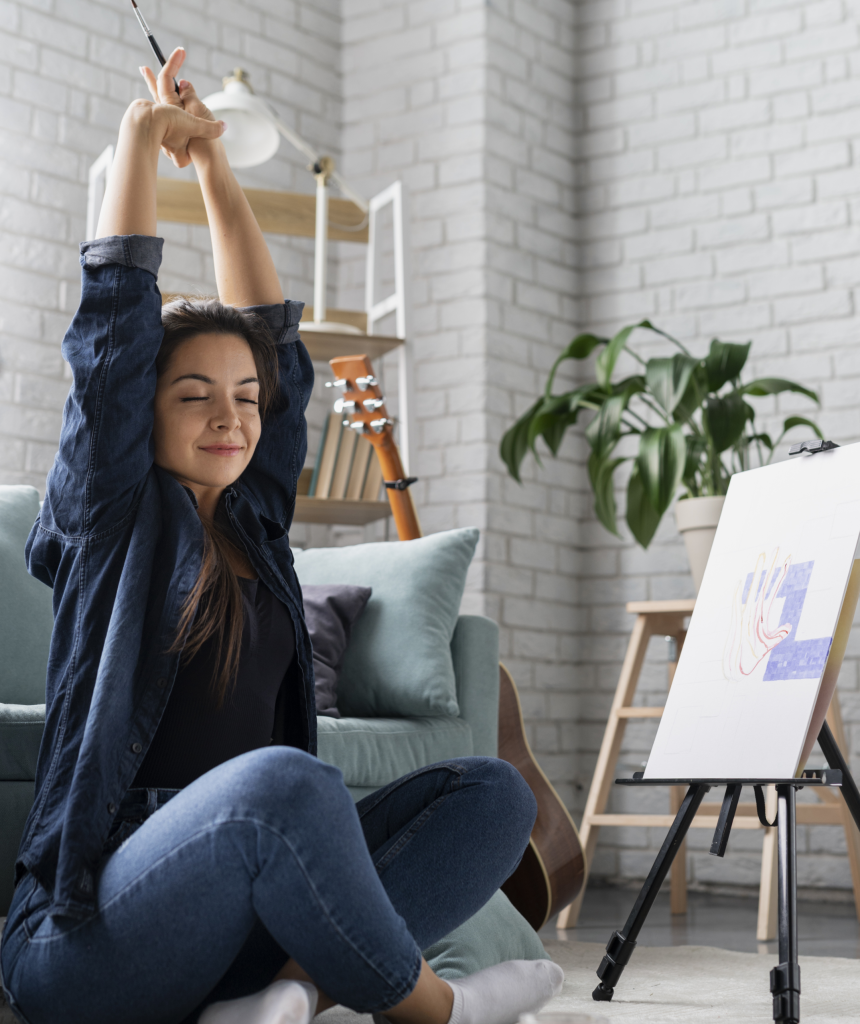#315 – 20385 64th Ave, Langley V2Y 1N5 604-533-9163
#315 – 20385 64th Ave, Langley V2Y 1N5 604-533-9163
There are so many times in life when we “can’t find the words” to describe our feelings. In the case of trauma, sometimes finding the words is painful—it can even make us feel re-traumatised. The beauty of art is that it gives us a chance to express our emotions without having to put them into words. As Aristotle said, “The aim of art is to represent not the outward appearance of things but their inward significance.” In other words, art is a way of illustrating what’s happening in our inner lives.
Art therapy combines the creative process with traditional models of counselling. It promotes relaxation, facilitates self-exploration, and helps reveal our innermost thoughts, feelings, and beliefs. It’s an approach that seeks to make the unconscious conscious, allowing for new perspectives and insights to emerge. Art therapists are trained to understand the roles that color, texture, and other materials can play in improving mental health.
The great thing about art therapy is that anyone can do it. You don’t have to be an artist. The goal is to use the creative process to understand yourself on a deeper level—it doesn’t matter how “good” or “bad” the finished piece of art is. What matters is what it tells you about yourself and how it makes you feel.


The fact that art and therapy work well together is no surprise. Studies have repeatedly shown that making art lowers stress levels, decreases PTSD, and activates reward pathways in the nervous system. Neuroscience has demonstrated that creating art raises serotonin levels and improves overall brain function.
Not only is making art good for mental health, but the artistic materials themselves can be therapeutic. Building with clay can be very relaxing for someone with anxiety because of the touchy-feely qualities involved. And painting can benefit children with ADHD, since it requires concentration to control the paintbrush and stay within the lines of a drawing.
Over the years, our therapy practice has used the expressive arts to help hundreds of clients of all ages. We utilize art therapy with children, teens, adults, and seniors. The approach works especially well with people that have trouble verbalising their feelings, such as young children or adults suffering from trauma. It can also help anyone dealing with anxiety, depression, low self-esteem, and grief and loss.
Art therapy looks different for every client, since every client has different artistic sensibilities and different mental health challenges. With therapeutic intention, your therapist will at times direct you to certain materials to use in therapy; other times, your therapist may be non-directive and allow space for whatever artistic preferences you bring to the table. Our practice welcomes drawing, painting, clay building, and even includes expressive forms of therapy like sand tray therapy. Your therapist will help you incorporate the art form that works best for you.
A typical art therapy session involves creating a work of art and then processing the experience. You and your therapist will look for patterns and themes in your art and reflect on the thoughts and emotions that emerge during the act of creation.
For instance, maybe you tend to draw with very rigid and controlled lines and use lots of easily controllable materials like pens, pencils, or markers. There may be a “perfectionist” at work in your art. This could signify a desire for control in your life. You and your therapist can explore areas of your life that you feel like you don’t have control over. In this way, the process of creation and reflection can reveal thoughts and feelings that weren’t accessible to you before.
That said, there is always a lot of room for interpretation in art therapy. Your therapist is not going to tell you what your art means. Instead, they’ll help you reflect on the process as well as what you made and explore what it means to you. They can offer guidance, but only you can truly understand what’s happening within you during the act of creation. Oftentimes, the art process and the art piece become a springboard for further exploration.


Since kids often struggle to communicate their emotions, art gives them an outlet for expressing what they can’t put into words. Although the process of creation and reflection is largely the same for both children and adults, art therapy for kids can be more instructional and prescriptive at times.
For example, suppose your child is struggling with anxiety. Their counsellor might ask them to imagine that their anxiety is a monster or another image that a child can easily understand. In this way, art therapy can help children understand emotional problems that are too hard for them to verbalise. Creating an image to symbolise their feelings can help them release emotions that they’ve been holding in for a long time.
Art therapy is a gentle and profound way of uncovering, processing, and expressing your thoughts, feelings, and emotions. It engages the mind, body, and spirit in ways that talk therapy can’t. Not only is art therapy very soothing and relaxing, but it goes much deeper than ordinary counselling, helping you access your unconscious and process emotions that are too complex for words.
At Darcy Bailey & Associates Counselling, we have several registered art therapists with years of experience doing what we do. If you want to use the creative process to bring healing and growth into your life, we encourage you to try art therapy with us. To get started, you can fill out the contact form or call 604-533-9163.
Providing virtual therapy across British Columbia and in-person therapy in Langley BC, serving Langley, Surrey, Cloverdale, South Surrey, Aldergrove, Abbotsford,Vancouver and Lower Mainland.
Respectfully acknowledging that we live, work and play on the traditional and territories of Coast Salish,Semiahmoo sq̓əc̓iy̓aɁɬ təməxʷ (Katzie), S’ólh Téméxw (Stó:lō), Á,LEṈENEȻ ȽTE (W̱SÁNEĆ), Kwantlen Stz’uminus, Nuxwsa’7aq (Nooksack) and Hul’qumi’num Treaty Group.
We invite you here to become familiar with the indigenous presence and the territories we occupy.